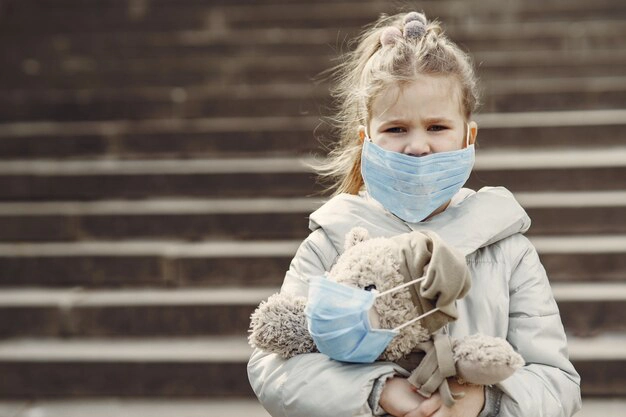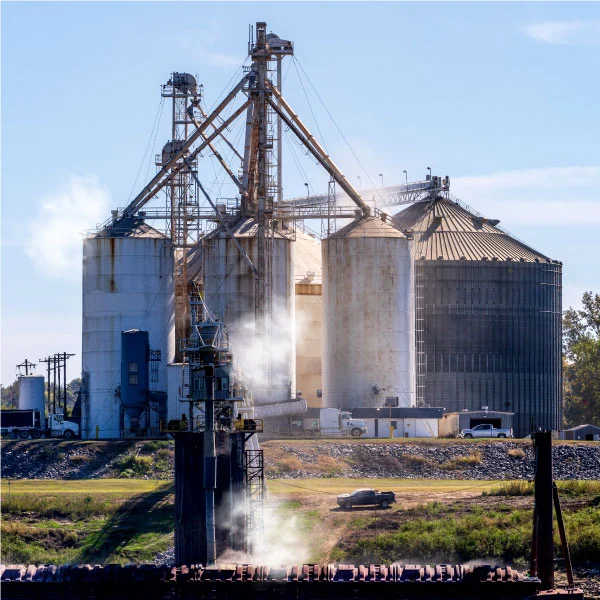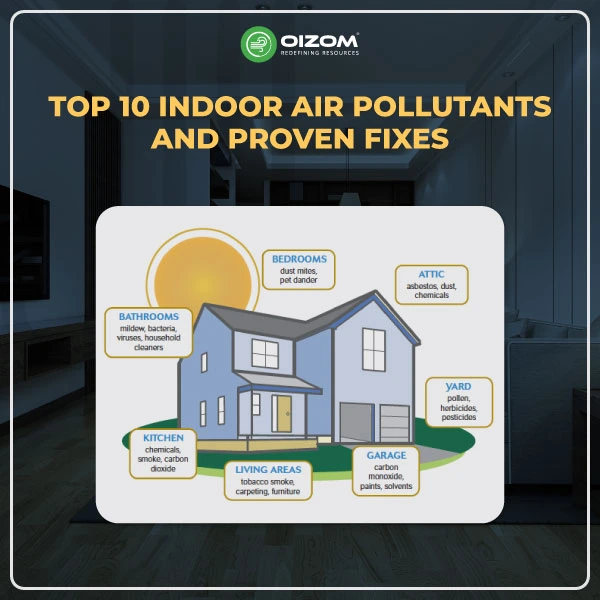Air pollution is an environmental issue and a significant public health crisis. The World Health Organization (WHO) has estimated that over 90% of children breathe toxic air daily. This exposure is particularly harmful during the early stages of life when physical and cognitive development is at its peak. It leads to chronic respiratory diseases, impairs development, and has been linked to child mortality.
The battle against air pollution is multi-dimensional. It requires the collective effort of governments, industries, communities, and individuals. In the context of children’s health, the urgency to act becomes even more significant. Understanding the sources, impacts, and potential solutions for air pollution is the first step towards creating a safe and healthy environment for the future generation.
We as an environmental company have taken up the mantle of this fight, offering innovative air quality monitoring solutions. Our real-time air quality monitors enable governments, communities, and individuals to measure and understand pollution levels in real time, empowering them to take appropriate and immediate action.
This blog aims to explore the complex relationship between air pollution and children’s health, unravel the associated risks, and highlight global initiatives, protective measures, and recommendations.
Health Risks Associated with Air Pollution for Children
Respiratory Effects
Children’s lungs are still developing, making them more susceptible to airborne pollutants like sulphur dioxide (SO2), nitrogen dioxide (NO2), particulate matter (PM2.5), and ozone (O3). These pollutants can cause or exacerbate respiratory problems such as asthma, bronchitis, pneumonia, and other chronic lung diseases.
Studies have shown a strong correlation between pollution levels and childhood asthma in urban areas with high vehicular emissions. The pollutants inflame the airways, causing them to narrow and making breathing difficult. For example, in London, where diesel vehicles are prevalent, there has been a significant rise in children’s hospital admissions due to respiratory issues.
Oizom’s air quality monitors can provide essential insights into these pollutants, allowing governments and communities to take targeted actions to reduce exposure, especially around schools and playgrounds.
Cardiovascular Effects
Air pollution’s impact on the heart and blood vessels is a relatively new field of research, but the findings are concerning. Pollutants can cause inflammation of blood vessels, contribute to arterial plaque growth, and even lead to heart diseases later in life.
Children exposed to high levels of air pollution may experience changes in blood pressure, arterial stiffness, and metabolic control. For instance, a study conducted in California has found an association between traffic-related air pollution and increased blood pressure in adolescents.
The long-term impact of these changes is not fully understood, but they could set the stage for serious cardiovascular problems in adulthood. Monitoring and reducing exposure to these pollutants is critical, and technology such as Oizom’s air quality monitors offers a way to understand and mitigate these risks locally.
This detailed examination of the health risks brings to light the urgent need for informed action. Whether implementing policies to reduce emissions or employing technology to monitor air quality, the goal must be to protect our children from these invisible yet deadly threats.
Find out how Oizom’s air quality monitoring solutions can empower your community to take action. Learn more here.
Weakness of Children to Air Pollution
Physiological Factors
Children are more susceptible to air pollution due to several physiological factors. Their bodies are continuously growing, with organ systems that are not fully developed or matured, making them more sensitive to environmental pollutants.
The respiratory system, in particular, is highly vulnerable. Children’s airways are narrower, and inflammation caused by pollutants can have a more significant impact, leading to conditions like asthma or bronchitis. Additionally, children’s higher breathing rates mean they inhale more air per unit of body weight, thus absorbing more pollutants.
The immune system’s immaturity also means that children are less capable of fighting off infections or toxins. Combining these physiological factors paints a picture of heightened vulnerability, where even minimal exposure to pollutants can have lasting impacts.
Behavioural Factors
Children’s behavioural patterns contribute to their increased exposure to pollutants. They are generally more active and spend more time outdoors, often playing close to the ground where concentrations of dust and heavy metals may increase.
Schools and playgrounds near busy roads or industrial areas regularly expose children to harmful emissions. A child’s natural curiosity and tendency to put objects in their mouth can also lead to ingesting polluted materials.
These behavioural aspects underscore the importance of creating safe play environments and increasing awareness among children and caregivers about the risks associated with air pollution.
Socioeconomic Factors
Socioeconomic factors play a crucial role in children’s exposure to air pollution. Children from low-income families often live in areas with higher pollution levels, closer to industrial zones or heavy traffic. They may lack access to healthcare or live in homes with poor ventilation, leading to exposure to indoor pollutants from cooking, heating, or tobacco smoke.
Educational disparities mean these children and their families may be less aware of the risks and preventive measures associated with air pollution. Poverty, education, and environmental exposure create a vicious cycle where the most vulnerable children bear the brunt of the impacts.
This complex interplay between physiological, behavioural, and socioeconomic factors highlights the multi-dimensional nature of children’s vulnerability to air pollution. Comprehensive strategies must address these aspects to create a healthier future.
Sources and Types of Air Pollution
Outdoor Air Pollution
Emissions from vehicles, industries, agricultural activities, and the burning of fossil fuels mainly cause outdoor air pollution. These sources release SO2, NO2, PM2.5, O3, and carbon monoxide (CO) into the atmosphere.
Traffic, especially in urban areas, is a significant contributor. Diesel vehicles emit large amounts of NO2, impacting children’s respiratory health. The burning of coal in industries releases SO2, leading to acid rain and respiratory issues.
In many developing nations, open burning of waste adds to the pollution. These outdoor pollutants affect children’s health and contribute to climate change, creating urgency for effective monitoring and control.
Indoor Air Pollution
Indoor air pollution, often overlooked, can be equally, if not more, harmful. Sources include cooking stoves, heating systems, use of cleaning chemicals, tobacco smoke, and indoor plants that may harbour mould.
In many low-income countries, using solid fuels like wood or coal for cooking in poorly ventilated spaces leads to high concentrations of pollutants like PM2.5. Exposure to such pollutants indoors has been linked to respiratory diseases, eye irritation, and headaches in children.
Improving ventilation, using cleaner fuels, and being aware of the potential sources of indoor pollution can mitigate these risks.
Understanding the sources and types of air pollution is essential in creating targeted interventions. Whether reducing emissions from vehicles or industries, implementing cleaner technologies, or creating awareness about indoor pollution sources, each step moves us closer to a cleaner and healthier environment for our children.
Protective Measures and Recommendations
Prevention and Reduction Strategies
Preventing air pollution requires a collective effort encompassing governments, industries, and individuals. Strategies include:
- Regulations: Implementing and enforcing laws to control emissions from vehicles, industries, and construction.
- Cleaner Technologies: Encouraging renewable energy, electric vehicles, and energy-efficient appliances.
- Urban Planning: Designing cities with green spaces and pedestrian-friendly areas to reduce reliance on polluting transportation.
- Monitoring and Reporting: Utilising advanced technologies like Oizom’s air quality monitors to provide real-time data and insights.
Public Health Interventions
Protecting children’s health requires specific interventions such as:
- Educational Campaigns: Educating parents, schools, and communities about the risks of air pollution and measures to protect children.
- Health Monitoring: Regular health check-ups for children in polluted areas to detect and manage respiratory and cardiovascular issues early.
- Emergency Protocols: Implementing protocols for high pollution days, like restricting outdoor activities for children.
Individual Actions
Individuals can also contribute by:
- Reducing Vehicle Emissions: Using public transport, carpooling, or cycling.
- Energy Conservation: Using energy-efficient appliances and reducing waste.
- Indoor Air Quality: Using non-toxic cleaning products and ensuring proper ventilation.
- Supporting Clean Technologies: Investing in products like Oizom’s air quality monitors to keep track of pollution levels in homes, schools, or workplaces.
Conclusion
The intersection of air pollution and children’s health is a multifaceted issue requiring concerted efforts from international bodies, governments, industries, communities, and individuals. The stakes are high, with millions of children at risk. Yet, the solutions are within reach.
We are paving the way with innovative technologies that enable real-time monitoring and actionable insights. Governments are stepping up with regulations, and communities are becoming more aware of their roles.
Together, we can build a future where every child can breathe freely without fear of invisible pollutants stunting their growth or endangering their lives.
Take a step towards a cleaner environment today with Oizom’s air quality monitoring solutions. Click here to find out how you can make a difference.






